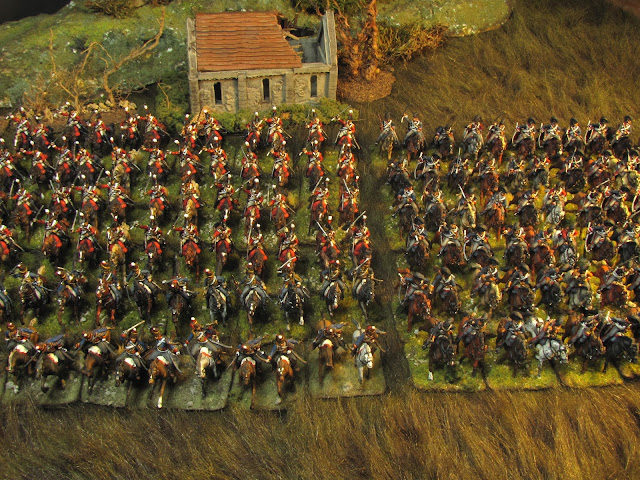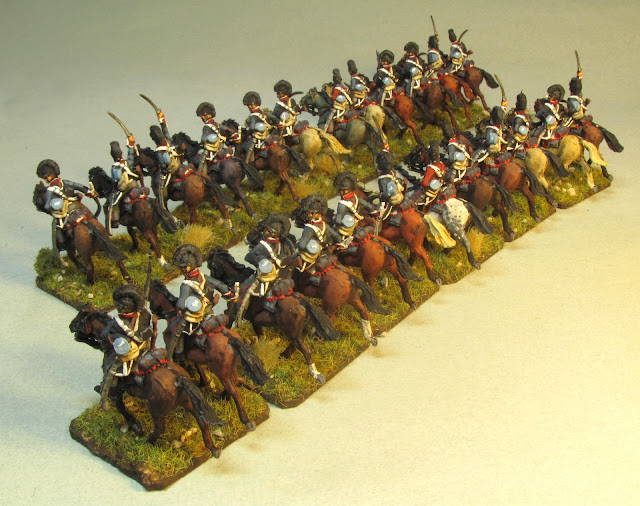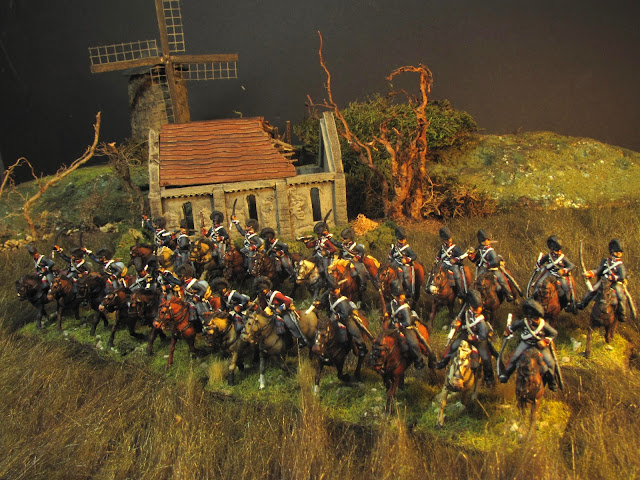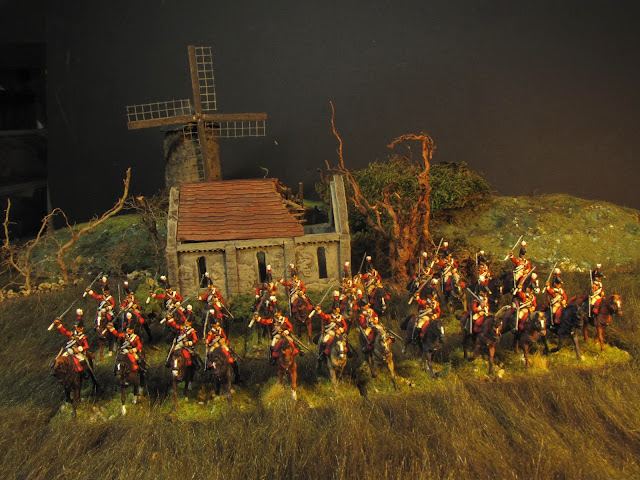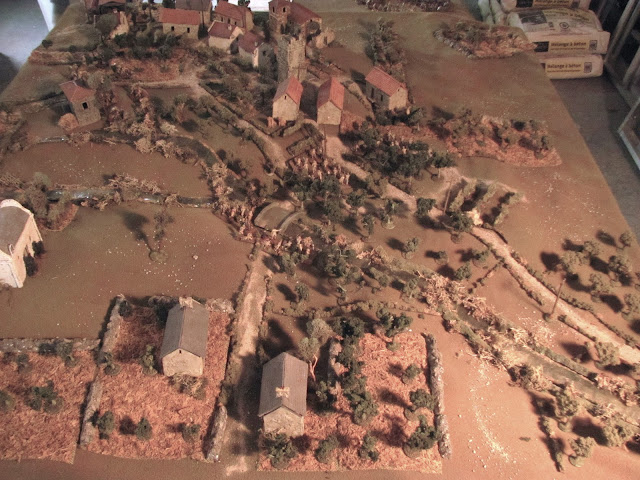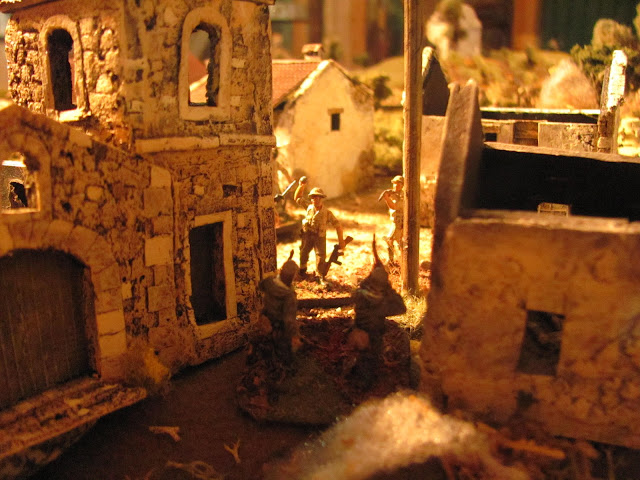We were back to the Napoleonics this weekend, and more importantly, back to the Peninsular War scenarios written by Jonathan Jones in his scenario book, O’er the Hills. Followers of this blog will know that we have been slowly but steadily playing our way through the entire book in chronological order and our last battle saw Wellesley send Soult packing from Portugal with his victory at Porto.
With that threat dealt with and the newly reconstituted Portuguese forces left to guard the north, Wellesley feels strong enough to turn his attention to Victor’s forces in Estremadura. He connects by message with the Spanish forces in the area under General Cuesta, and they contrive to join forces west of Madrid, bringing Victor’s army to battle before it can be reinforced.
However the mercurial Cuesta proves to be an unworthy dance partner as he is out-maneuvered by Victor, who successfully links up with King Joseph’s reserve and Sebastiani’s IV Corps who pursue the Spanish back towards the British. The British take up positions at the chosen field of battle, Talavera, trying to buy time for the two forces to join.
This scenario represents the clash of the British rearguard under Major General Sir Arthur Mackenzie and the French advance guard, namely the 2nd Division, 1 Corps under General de Division Pierre-Bellon Lapisse. The French have managed to advance on the British undetected and launch a surprise afternoon attack that catches the British flat-footed. Interestingly enough, Wellesley himself was present, having gone forward to observe the French from one of the ruined towers at the abandoned farm of Casa de Salinas. The French attack is almost upon him before he realizes it is materializing! We played this on a 6’X9’ table with my 1/72 toy soldiers, using the Over the Hills ruleset. Alan and Phong took the French while I wielded the British. Apologies for the poor photos this time around - the light was marginal on a dark November day in Alan’s coach house.
 |
| The scenario map showing initial British positions. Laplanne's brigade entered in behind the 16me Legere while Solignac's brigade entered straddling the road. The British were unable to move or send orders until the first exchange of volleys. |

1. Napping British
The British rearguard, taking the shade on a hot Spanish summer afternoon amongst the scattered woods and olive groves surrounding the ruined farmhouse of Casa de Salinas (centre left), are completely unaware of Lapisse’s approaching French (upper right).

2. Contact!
Suddenly the woods are alive with French forces, as the skirmishers on both sides exchange fire. French voltigeurs almost fight their way into the farm, threatening to take Wellesley captive, but the British light bobs manage to hold them off in vicious hand to hand fighting at the gates off the farm.

3. French right
On the French right the six battalions of the 16me Legere and 45me Ligne engage Donkin’s 2nd Brigade (87th, 88th and a couple of companies of 60th Rifles).

4. French left
Solignac’s 2nd Brigade (six battalions of the 8me and 54me Ligne) follow closely behind their skirmish screen with the intention of seizing the farm. The French have a battery of horse artillery with them but it is unable to unlimber in the woods east of the farm and until the farm is seized, unable to move forward.
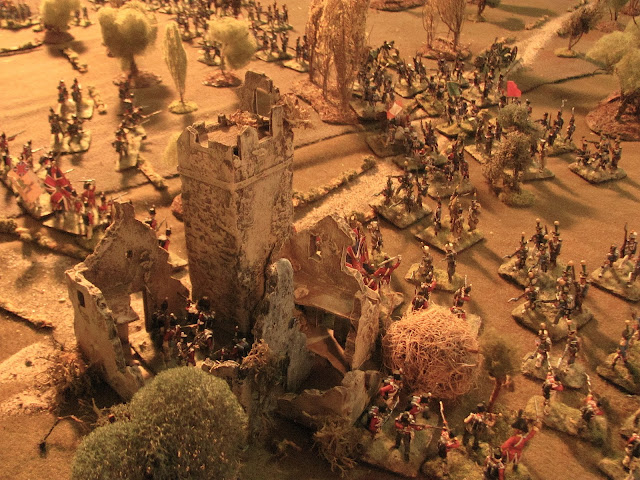
5. 1/45th occupies Casa de Salinas
Finally alerted to the attack Wellesley manages to exit the tower, sending the 1/45th (Nottinghamshire) to occupy the ruined farm and out buildings.

6. British command
Realizing this is a concerted French attack Wellesley issues a flurry of commands through Mackenzie. The farm needs to be held as long as possible to slow the French advance, but he doesn’t want to fight the French in the woods. To his rear lies Anson’s Light Cavalry brigade, and if the 3rd Division can extract themselves and fall back to open ground then the British horse should keep Lapisse at bay. An ADC is sent out to alert Anson to the French attack and bring him up in support of the British right.
However, Wellesley wants his precious 60th Rifles into Casa de Salinas, so orders them to relieve the 1/45th of their position in the farm.

7. Long ride for the ADC
Anson’s cavalry spot a trail of dust coming from the front lines, soon revealing itself as an ADC clutching orders from the great man himself. But Anson questions the authenticity of the orders, not knowing that Wellesley is with Mackenzie on the front lines, and is slow to respond.

8. Orders mix up
In a further mix up of orders, the 1/45th vacate the farm before the Rifles arrive to take over. With French voltigeurs swarming the woods in front, Guard manages to salvage the situation by throwing his light bobs into the farm before the French can realize that the complex has been abandoned!

9. Solignac’s brigade assaults the farm
Before the British light infantry can get established, Solignac throws his own skirmishers against them. They fight to a stalemate, but badly battered and seeing nothing but French in front, the British garrison panics and routs.
 10. 16me Legere advance against the British left
10. 16me Legere advance against the British left
Meanwhile, on the British left Laplanne’s brigade plays cat and mouse with Donkin’s 2nd Brigade. Other than some clashes between the opposing skirmish screens the British, in open order, steadily retreat towards the open ground, loosing long range volleys on the advancing French whose casualties steadily mount.
 11. 1st Brigade goes onto the attack
11. 1st Brigade goes onto the attack
Back on the British right the 60th Rifles, slow to respond, have fortunately arrived at the farm just in time and take over its defence (the third British unit in as many turns now to have it in its possession!) Colonel Guard’s 1st Battalion is sent into the attack, trying to drive back the encroaching French and buy time for the Rifles to get emplaced.
The 2/24th break the 3/54me on the British right and, flush with victory, optimistically surge forward to close with the other two battalions of the 54me.

12. 2/31st broken!
Guard’s 2/31st have less luck, hitting the French on the woods’ edge north of Casa de Salinas. In three rounds of nasty fighting the 1/31st is utterly broken, its survivors fleeing to the rear.

13. 60th Rifles holding off the French
But Guard’s attack has bought time for the Rifles to get themselves in good position in the farm. They drive off one advancing French column with some well aimed fire and repel French skirmishers trying to fight their way in from the east.
 14. French 45me go into the attack
14. French 45me go into the attack
On the French right Laplanne’s 45me forms up to attack Donkin’s veteran Connaught Rangers. The opposing skirmishers clash in close combat, and the British get the better of it, routing the French voltigeurs while they themselves withdraw in good order behind their lines.
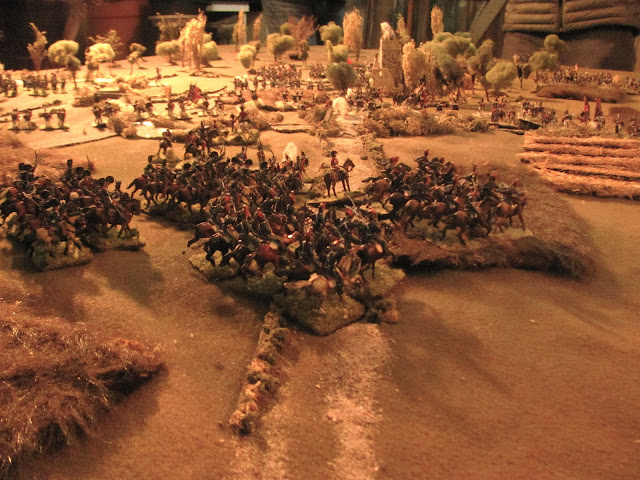
15. British cavalry on the move
Anson, finally realizing that he is sorely needed up front, spurs his brigade forward.

16. Guard’s brigade broken, but so is Solignac’s
The 2/24th’s victory on the British left quickly turns to defeat. They founder on the French line and rout, and combined with the loss of the 1/31st, Col. Guard’s brigade breaks and fails to rally. But Solignac too has taken a beating in its repeated attempts to seize Casa de Salinas, and also breaks and retreats to the rear, leaving only the French right (British left) still relatively intact.
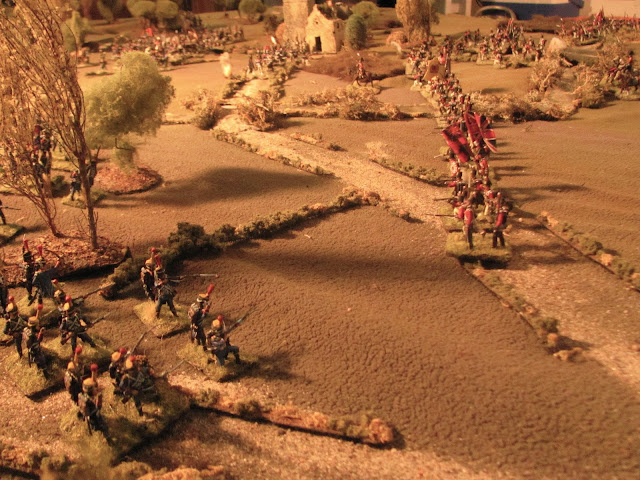
17. Donkin’s brigade in retreat
Despite Guard’s brigade being in retreat, the British are now mostly withdrawn into the open ground with Anson’s horse coming forward in support. All that remains now is for the Rifles to hold out in the farm, buying time for the 3rd Division, bloodied, to make its way back to the main British line at Talavera.
 18. Rifles ousted by 1/45me!
18. Rifles ousted by 1/45me!
But seeing Solignac’s brigade in retreat and the British slipping away, Lapisse orders Laplanne to seize the farm at all costs so that he can bring his cannon forward to harry the British retreat. Against all odds, the 1/45me launches a last desperate attack against Casa de Salinas and ousts the Rifles from their fortress!

19. Game end
We called it here at the end of the 6th round. On the bottom right Anson's cavalry can be seen riding forward but too late to save Guard's 1st Brigade, broken and retreating. Top right Solignac's does the same while on the left Donkin retreats in good order with Laplanne in pursuit. Centre top the farm has finally fallen to the French.
With the farm taken and Col. Guard’s brigade broken, the French had achieved both of their victory objectives. However Solignac’s brigade was also broken and Laplanne’s brigade had taken a beating in its steady pursuit of the retreating British and was close to collapse.
We decided, however, that the British intent was to buy some time to be able to extricate themselves and retreat to Talavera in relatively good order, so to go on the offensive against a spent French force that wasn’t wasn’t about to pursue into open ground (Donkin’s brigade was also tottering) made no sense.
The entire game was a whole lot of fun, from the surprise attack at the beginning that very nearly had the chance to capture Wellington to the order mix ups that left the fulcrum of the game, the farm, unoccupied to the final French push that seized the farm against incredible odds.

